Hamilton EverGraze Proof Site Systems Experiment
EverGraze set out to achieve a goal – significantly increase profitability (by 50%) while maintaining ground cover, perenniality and reducing salinity risk by increasing water use. To achieve the goal, the project applied a principle: Put the Right Plant in the Right Place for the Right Purpose with the Right Management.
Perennial feedbase combinations were combined with high performance livestock enterprises, and best practice livestock, soil and grazing management practices, to design farm systems which would achieve the goals. Pre-experimental modelling was used to test the potential of each proposed system.
This page describes how the EverGraze principles were applied at the Hamilton EverGraze Proof Site. Full details of the experiment, the issues addressed, results and what it all means to farmers can be found on the following pages:
- Putting the Right Plant in the Right Place for the Right Purpose with the Right Management can extend the growing season, increase profit, reduce risk, reduce salinity, maintain ground cover and make perennials persist.
- Achieving greater profits from perennial pastures balances stocking rate and lambing date to consume more of what is grown. The aim is greater product (wool and meat) per hectare.
- Lucerne reduces risk, provides options for livestock and prevents salinity.
Selecting and establishing plant combinations
The “Right Plant, Right Place, Right Purpose, Right Management” principle summarises the considerations for selecting and managing pasture species and cultivars in EverGraze systems. In the design of the systems experiments, the given soil types, rainfall, livestock enterprise needs and management requirements were considered to apply the principle.
Perennial pasture systems
[expand title=”” swaptitle=” ” tag=”h4″ elwraptag=”div” elwrapclass=”expend-collapse-wrapper”]
At Hamilton, three perennial pasture systems were developed from the results of pre-experimental modelling and agronomic selection of pastures suited to well-drained crests, slopes and poorly drained clay flats at the Hamilton EverGraze site. The systems were:
- Perennial Ryegrass System; early flowering ryegrass (Fitzroy) on the crest, mid flowering ryegrass (Avalon) on the slopes and late season ryegrass (Banquet) on the valley floors (Figure 1).
- Triple System; where perennial ryegrass was replaced with semi winter active lucerne (SARDI Seven), on the crests and summer active tall fescue (Quantum) on the valley floors (Figure 2).
- Novel System; Chicory (Grasslands Puna) was used on the crests, Italian (2006, 2007)/late finishing perennial ryegrass (Banquet) (2008) ryegrass on the slopes and kikuyu (Whittet) on the valley floors (Figure 3).
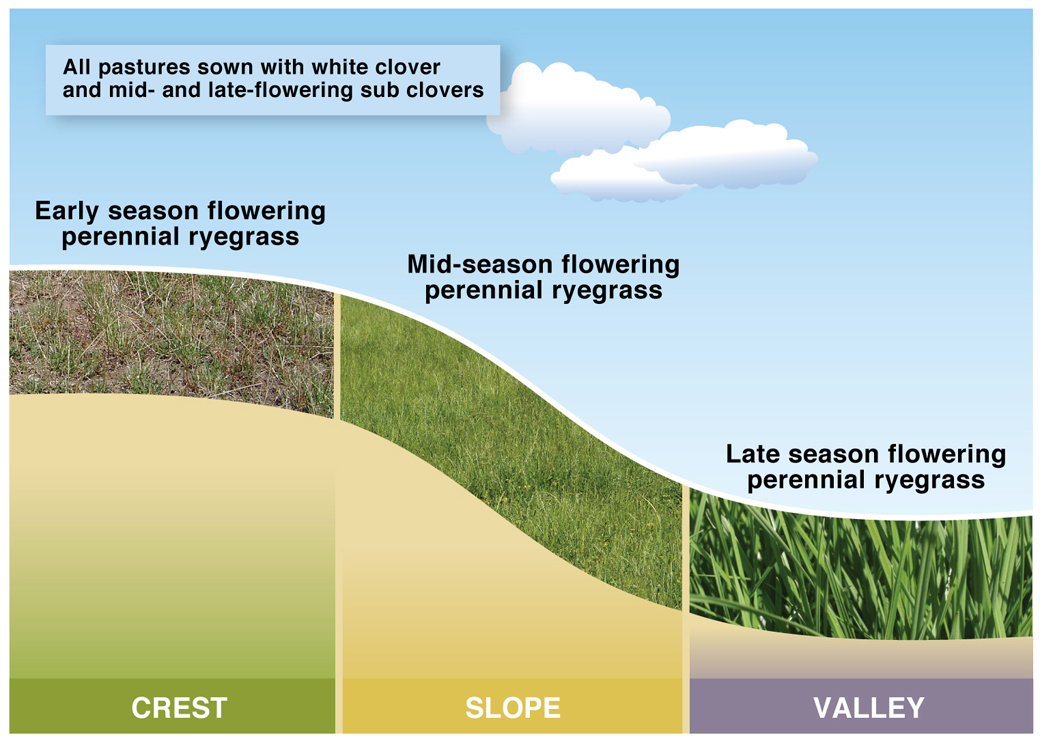
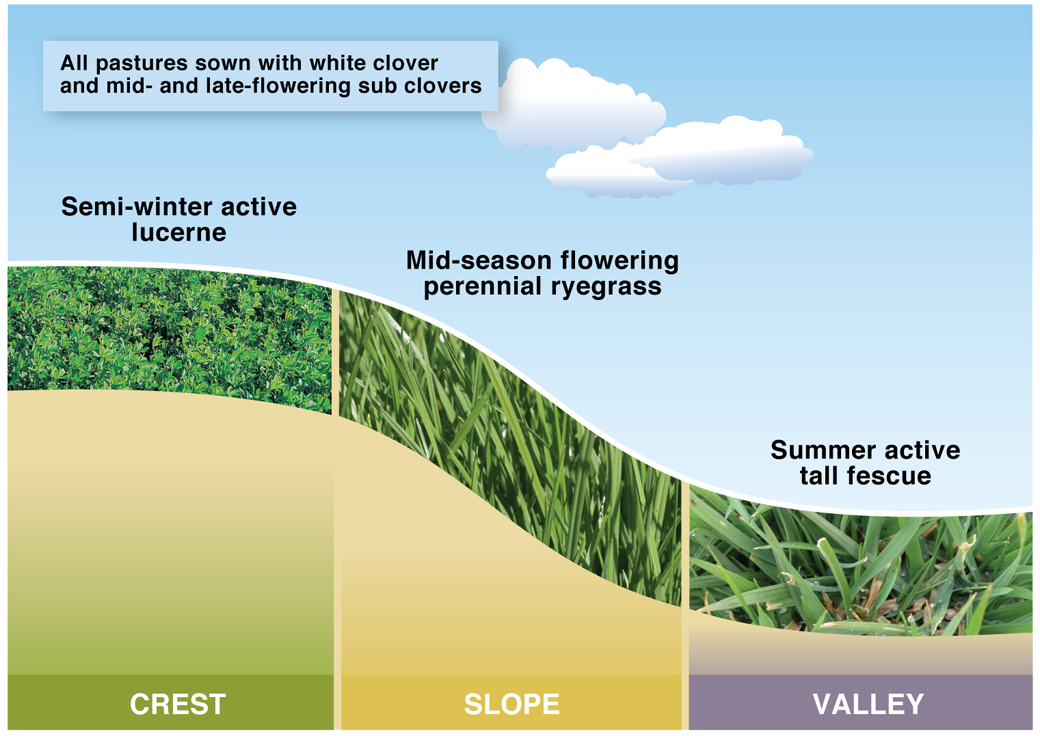
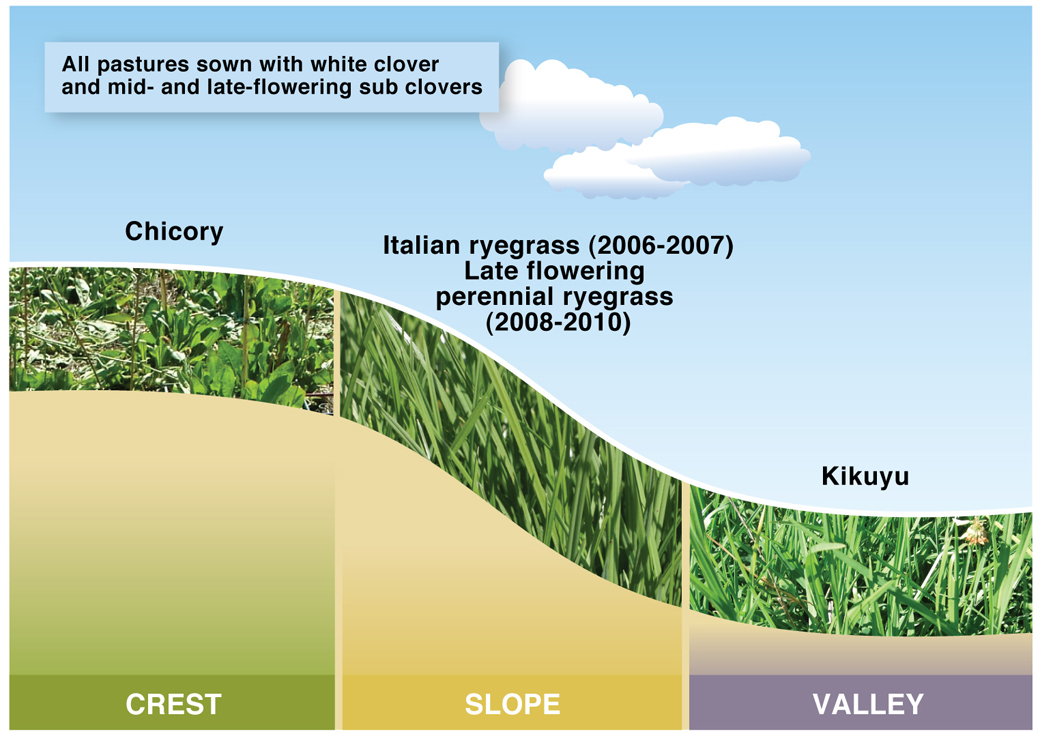
Clovers
All pastures were sown or oversown with a mix of subterranean clovers (cv. Leura and Gosse) and white clover (cv. Mink). The subterranean clover cultivars were chosen to provide a mix of flowering/maturity dates, variation in hardseedness and variation in their production and suitability to different soils and environments. Leura sub-clover is a subterranean sub-species, that is late maturing and has been shown to produce well and maintain high quality feed late into the season in this high rainfall environment and is suited to well drained loamy soils. Gosse sub-clover is a member of the yanninicum group with a mid-season flowering date, is tolerant of waterlogging and performs well on slightly acid predominately clay soils. Both these sub-clovers became the dominant legumes in the systems compared to the white clover representing approximately 20-30% of the sward during the growing season.
Establishment
Each system replicate was made up of three paddocks (crest, slope and valley floor), each of about one hectare. The summer active perennials (kikuyu, tall fescue, lucerne and chicory) were established in the spring of 2004, while the temperate perennials (perennial and Italian ryegrasses) were sown in autumn 2005. Subterranean clover was over-sown into all plots in autumn 2005. Details of sowing rates and fertiliser treatments at Hamilton are provided here.[/expand]
Right soil management
Soils at the Hamilton EverGraze site were managed to maintain an Olsen phosphorus level of 15 mg/kg. Soil acidity was also addressed on the crests with agricultural lime. Full details of soil treatments at Hamilton are provided here.
Best practice soil phosphorus use was based on outcomes from the Hamilton Long Term Phosphorus Experiment (LTPE) which demonstrated that maintaining good soil fertility (particularly phosphorus) is fundamental to optimising pasture production and stocking rates, maintaining pasture composition and achieving higher pasture quality for longer.[/expand]
Right grazing management
Best practice grazing management practices were based on outcomes from Hamilton and Broadford Grazing Experiments which demonstrated that rotational grazing was needed to maximise persistence, production and utilisation of perennial pastures. Each pasture system at Hamilton was divided into six paddocks – two on each of the crest, slope and valley floor (each about half a hectare). Rotations were predominately based on allowing the perennial ryegrass and tall fescue to re-grow three leaves prior to grazing, resulting in rotations of 14-28 days in spring, 28-42 days in summer/autumn and 42-56 days in winter.
To avoid erosion risk and maintain pasture persistence, recommended ground cover and food on offer (FOO) thresholds were applied – livestock were removed from pastures and containment fed ifground cover dropped below 70% or FOO reached 800kg dry matter per hectare.
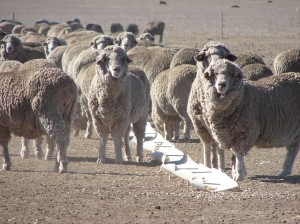 |
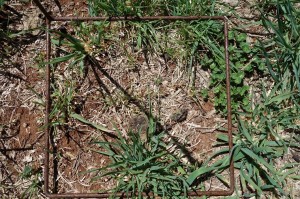 |
| Sheep were removed from pastures and placed in containment areas when pastures reached 70% ground cover | |
Optimised enterprise and livestock management
To achieve increased profit and reduced risks, improved perennial pastures must be combined with highly productive livestock genotypes and optimum management.
CentrePlus and Toland Merino ewes were joined to terminal sires. The ewes were put on the pasture in February 2006 and lambed down as either single or twin bearing ewes in 2006 and 2007. Merino and Coopworth ewes (joined to terminal sires) were subsequently stocked on the site from May 2008 and they lambed in September 2008 and August 2009 as flocks containing scanned single, twin and triplet bearing ewes.
A steer/heifer back-grounding system was also run, with the animals stocked in autumn 2006, 2007, 2008 and sold the following December or January.
A cow-calf system grazed from January 2009, with Angus and Charolais-cross cows mated to Angus bulls for a September calving.
Table 6 shows the treatment design and matrix applied across the experimental site at Hamilton. The carrying capacity of the different pasture systems was an outcome of the experiment. Each month, feed on offer (FOO) was determined and the number of stock in a paddock was adjusted if necessary to ensure that the average FOO on all systems was similar and aligned with achieving condition score targets set to optimise reproductive performance by following Lifetimewool guidelines.
Table 6. Matrix of pasture and sheep systems with potential lambing percentage at allocation for each year 2006 to 2009.
|
Year |
Novel pasture System |
Ryegrass Pasture System |
Triple Pasture System |
|
2006 & 2007 |
Merino Single lambs 100% |
Merino Single lambs 100% |
Merino Single lambs 100% |
|
Merino Twin Lambs 200% |
Merino Twin Lambs 200% |
||
|
2008 |
Merino Scanned 129% |
Merino Scanned 129% |
Merino Scanned 129% |
|
Coopworth Scanned 179% |
Coopworth Scanned 179% |
||
|
2009 |
Merino Scanned Average 149% |
Merino Scanned Average 156% |
Merino Scanned Average 152% |
|
Coopworth Scanned Average 185% |
Coopworth Scanned Average 184% |
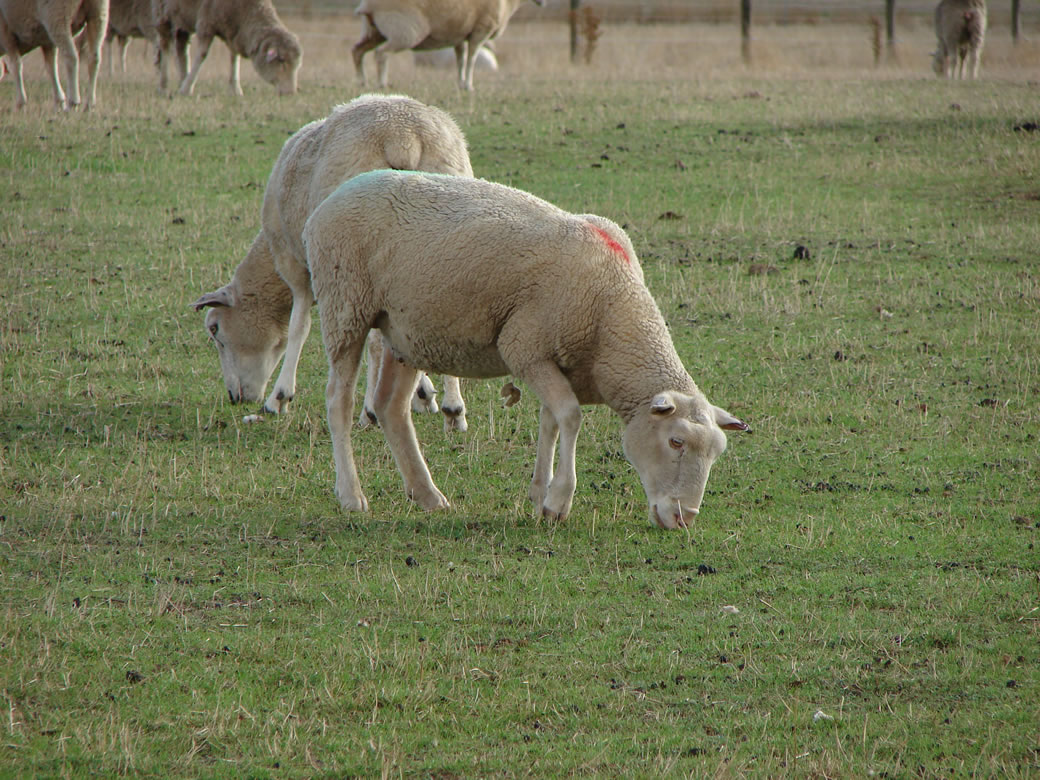
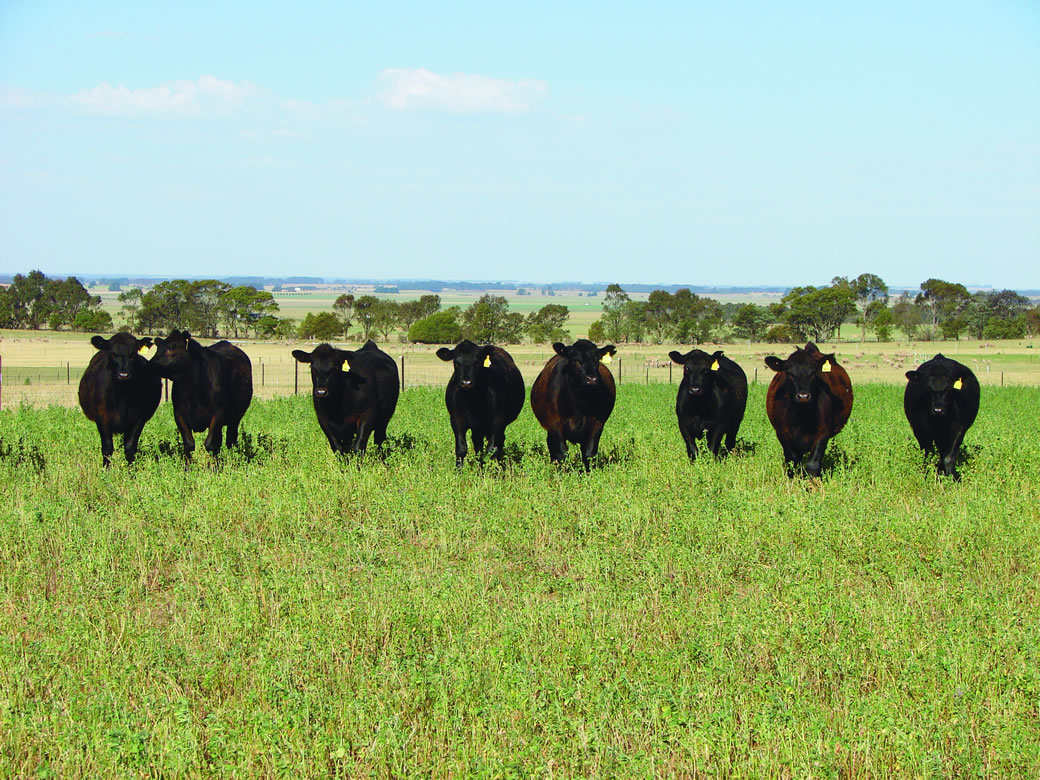
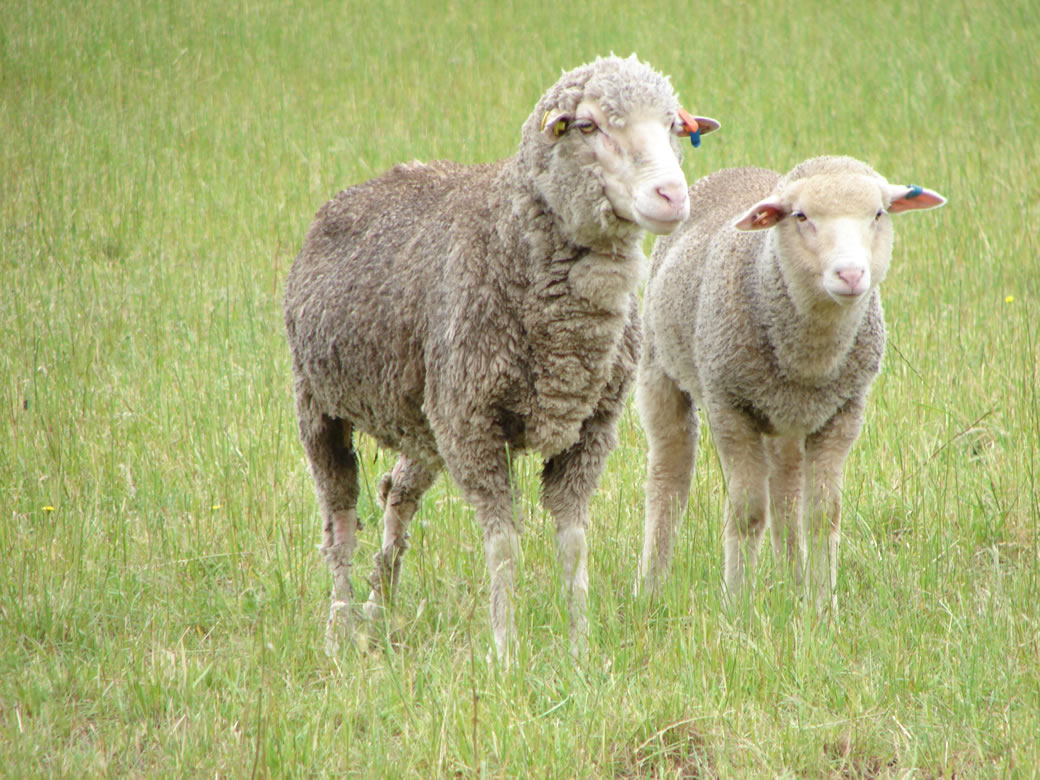
Coopworth composites (left) were compared to Merinos joined to terminal sires (right) and a heifer/steer backgrounding system (middle). Cows and calves were also run in 2009 and 2010.
For full details and results are available for the Hamilton Proof Site livestock systems and stocking rates.
Further Information
- EverGraze Exchange: Selecting pastures for place and purpose
- EverGraze Exchange: Livestock systems for profitable and sustainable pasture use
- EverGraze Exchange: Nuts and Bolts of Grazing Strategies
- Hamilton Long Term Phosphate Experiment
- Broadford Grazing Experiment
- Hamilton EverGraze Key Message: Livestock systems
- Hamilton EverGraze Key Message: Pasture systems
- Hamilton EverGraze Key Message: Summer active perennials

